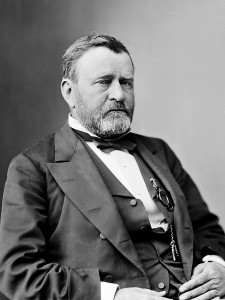April 3
Today in 1865, the Rebel capital of Richmond, Virginia, falls to the Union, the most significant sign that the Confederacy is nearing its final days. In fact, there are only six days left.
For ten months, General Ulysses S. Grant had tried unsuccessfully to infiltrate

the city. After Lee made a desperate attack against Fort Stedman along the Union line on March 25, Grant prepared for a major offensive. He struck at Five Forks on April 1, crushing the end of Lee’s line southwest of Petersburg. On April 2, the Yankees struck all along the Petersburg line, and finally the exhausted Confederates collapsed under the weight of Grant’s extended front.
On the evening of April 2, the Confederate government fled the city with the army right behind. Now, on the morning of April 3, blue-coated troops entered the capital. Richmond was the holy grail of the Union war effort, the object of four years of campaigning. Tens of thousands of Yankee lives were lost trying to get it, and nearly as many Confederate lives lost trying to defend it. Now, the Yankees came to take possession of their prize. One resident, Mary Fontaine, wrote, “I saw them unfurl a tiny flag, and I sank on my knees, and the bitter, bitter tears came in a torrent.” Another observer wrote that as the Federals rode in, the city’s black residents were “completely crazed, they danced and shouted, men hugged each other, and women kissed.” Among the first forces into the capital were black troopers from the 5th Massachusetts Cavalry, and the next day President Abraham Lincoln visited the city. For the residents of Richmond, these were symbols of a world turned upside down. It was, one reporter noted, “…too awful to remember, if it were possible to be erased, but that cannot be.”
To purchase a signed copy of Larry Auerbach’s novel “COMMON THREADS”, Click Here
Photo courtesy of wikipedia.com


